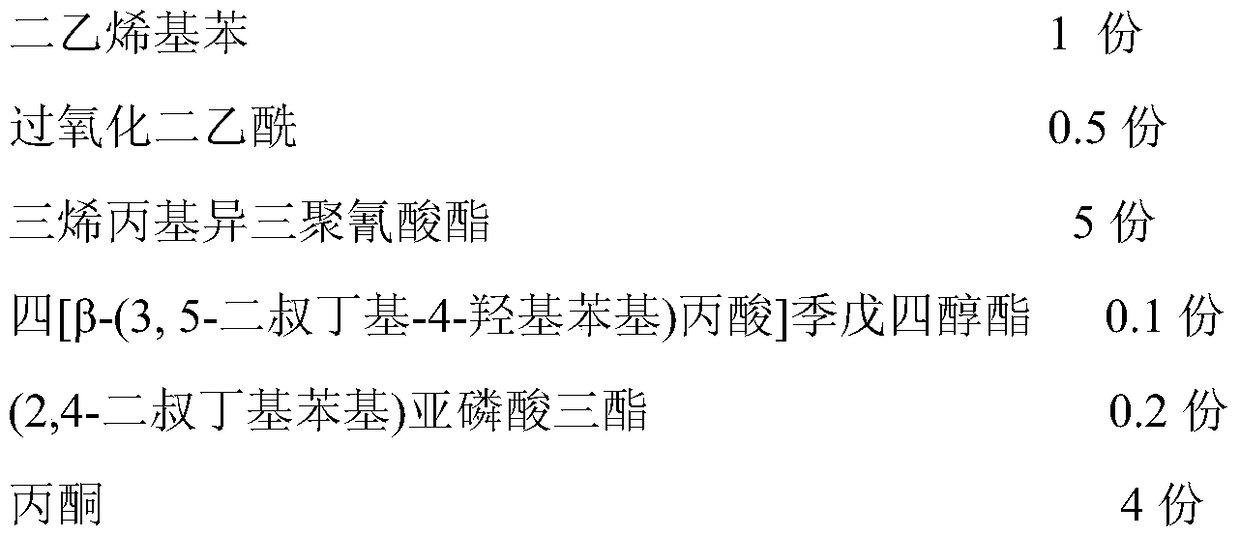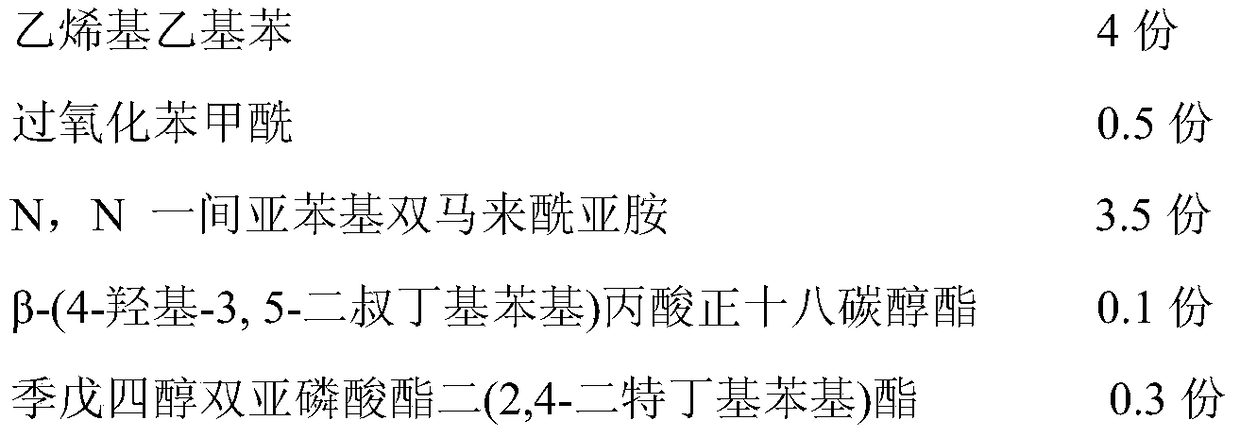A kind of preparation method of high melt strength polypropylene
A technology with high melt strength and polypropylene, applied in the field of polypropylene, can solve problems such as narrow application range, achieve low crosslinking degree, simple process, and avoid a large amount of degradation
- Summary
- Abstract
- Description
- Claims
- Application Information
AI Technical Summary
Problems solved by technology
Method used
Image
Examples
Embodiment 1
[0034] The twin-screw extruder used in this embodiment is a co-rotating twin-screw extruder with a screw diameter of 30 mm and a length-to-diameter ratio of 52.
[0035] 3 parts of styrene, 1.25 parts of benzoyl peroxide, 0.5 parts of triallyl cyanurate, 0.2 parts of β-(4-hydroxy-3,5-di-tert-butylphenyl)propionic acid Add n-octadecyl alcohol ester and 0.4 part of (2,4-di-tert-butylphenyl)phosphite triester into 3 parts of acetone and stir and mix thoroughly to obtain a mixture of additives. Add 100 parts of homopolypropylene powder with a melt flow rate of 0.2g / 10min into a medium-speed mixer, and in the presence of an inert gas, spray the above-mentioned mixture on the surface of the polypropylene powder several times. Finally, it is used as a mixture after thorough mixing.
[0036] The above compound is added into a twin-screw extruder for extrusion granulation. The extrusion temperature of the twin-screw extruder was 210°C. The speed of the main machine is 80rpm, the fee...
Embodiment 2
[0039] The twin-screw extruder used in this embodiment is a co-rotating twin-screw extruder with a screw diameter of 30 mm and a ratio of length to diameter of 46.
[0040] The rest are basically the same as in Example 1, but the polypropylene is changed to a homopolypropylene with a melt flow rate of 2g / 10min, and the extrusion temperature of the twin-screw extruder is changed to 190°C.
[0041] Auxiliary formula changed to:
[0042]
[0043] The melt flow rate of the obtained high melt strength polypropylene was 3.6 g / 10 min, the melt strength was 23 cN, and the degree of crosslinking was 0.5%. Ordinary polypropylene with the same melt flow rate has a melt strength of 3.5 cN.
Embodiment 3
[0045] The twin-screw extruder used in this embodiment is a co-rotating twin-screw extruder with a screw diameter of 30 mm and a ratio of length to diameter of 56.
[0046] All the other are basically the same as in Example 1, but the polypropylene is changed into 10% of ethylene copolymerization amount, the melt flow rate is the copolymerized polypropylene of 10g / 10min, and the extrusion temperature of twin-screw extruder is changed into 180 ℃.
[0047] Auxiliary formula changed to:
[0048]
[0049] The melt flow rate of the obtained high melt strength polypropylene was 8.4 g / 10 min, the melt strength was 13.7 cN, and the degree of crosslinking was 0.3%. The melt strength of ordinary polypropylene with the same melt flow rate is 0.95cN.
PUM
| Property | Measurement | Unit |
|---|---|---|
| melt flow index | aaaaa | aaaaa |
| diameter | aaaaa | aaaaa |
| melt flow index | aaaaa | aaaaa |
Abstract
Description
Claims
Application Information
 Login to View More
Login to View More - R&D
- Intellectual Property
- Life Sciences
- Materials
- Tech Scout
- Unparalleled Data Quality
- Higher Quality Content
- 60% Fewer Hallucinations
Browse by: Latest US Patents, China's latest patents, Technical Efficacy Thesaurus, Application Domain, Technology Topic, Popular Technical Reports.
© 2025 PatSnap. All rights reserved.Legal|Privacy policy|Modern Slavery Act Transparency Statement|Sitemap|About US| Contact US: help@patsnap.com



